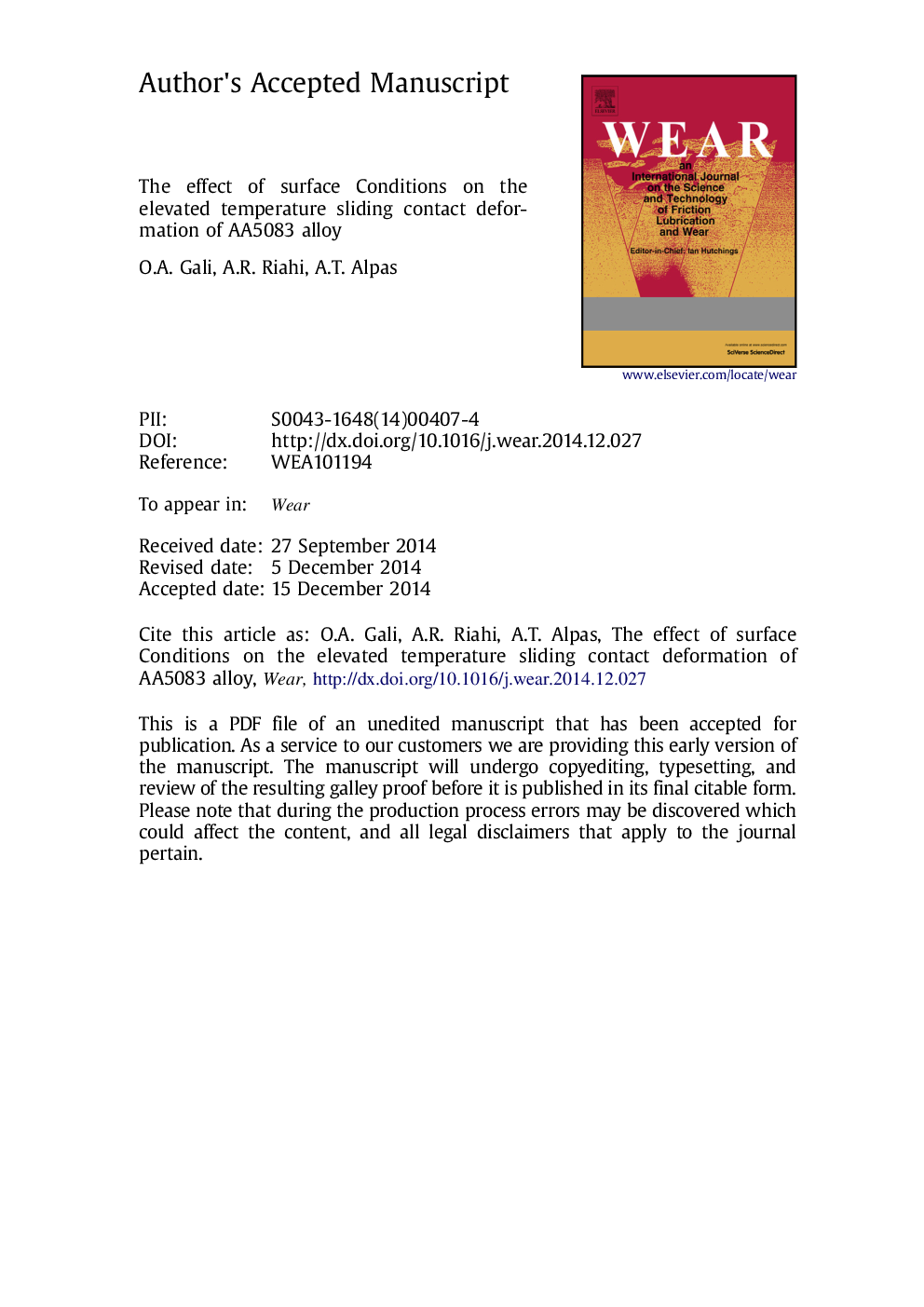| Article ID | Journal | Published Year | Pages | File Type |
|---|---|---|---|---|
| 7004304 | Wear | 2015 | 42 Pages |
Abstract
Elevated temperature sliding contact experiments were carried out on an Al-Mg alloy AA5083 to study the formation of oxide fibres on their surface. Deformation and friction tests were conducted at a constant strain rate of 4Ã10â2 sâ1 at temperatures 350 °C, 450 °C and 545 °C. The samples were tested in two surface conditions, namely in the as-received condition, with surfaces covered with a tribolayer generated during previous rolling processes and after being polished to remove the tribolayer. The coefficient of friction, COF, and the wear of the AA5083 surfaces as well as the amount of material transferred to the counterface increased with the temperature. The presence of tribolayers on the surface was beneficial, as the polished surfaces showed generally higher COF and wear, with a tendency to form localised adhesive joints with the counterface. Oxide fibres formed during plastic deformation (with diameters of about 100 nm) were generated within the cracks on the tribolayers and inside the cavities at the Al-Mg grain boundaries. High resolution scanning and transmission electron microscopy showed that the fibres were composed of an outer shell of MgO, Al2MgO4 and Al2O3 and an inner core of Al nanograins. The visco-plastic deformation behaviour of oxide fibres observed within the sliding track could have contributed to the reduction of COF.
Related Topics
Physical Sciences and Engineering
Chemical Engineering
Colloid and Surface Chemistry
Authors
O.A. Gali, A.R. Riahi, A.T. Alpas,
